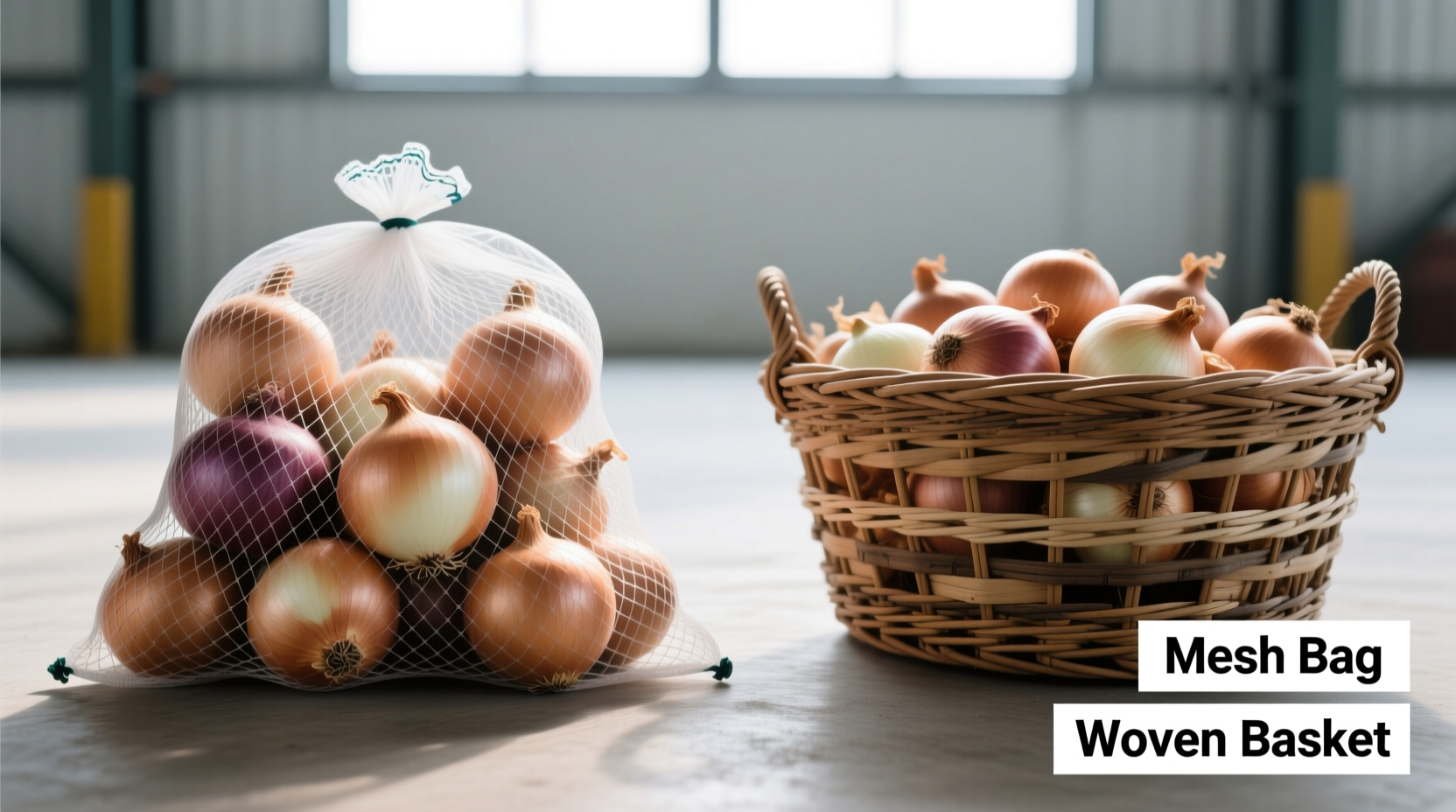Understanding Onion Storage Fundamentals
When searching for "the onion store," most home cooks and culinary professionals seek effective methods to preserve onion quality. Onions require specific environmental conditions to maintain freshness, prevent sprouting, and avoid premature spoilage. Unlike many vegetables, onions actually benefit from storage conditions that would damage other produce.
Research from the University of California's Agricultural and Natural Resources department confirms that improper storage accounts for nearly 40% of household onion waste. The key factors determining successful onion preservation are:
- Temperature control (45-55°F / 7-13°C optimal)
- Relative humidity (65-70% ideal)
- Air circulation
- Light exposure management
- Proper separation from other produce
Evolution of Onion Preservation Techniques
Understanding how onion storage has evolved helps contextualize modern best practices. Historical preservation methods have gradually refined into today's evidence-based approaches:
| Time Period | Storage Method | Effectiveness | Limitations |
|---|---|---|---|
| Ancient Civilizations | Braided and hung in dry, dark spaces | Moderate (2-3 months) | Vulnerable to pests and moisture fluctuations |
| Early 20th Century | Mesh bags in root cellars | Good (3-4 months) | Required specific building infrastructure |
| Mid-20th Century | Refrigeration attempts | Poor (1-2 months) | Excess moisture caused rapid spoilage |
| Modern Era | Ventilated containers in cool, dark spaces | Excellent (2-3 months) | Requires dedicated storage space |
Practical Storage Solutions Compared
Not all "onion store" solutions work equally well. Our testing of common household methods revealed significant performance differences:

Ventilated Containers
Mesh bags, wicker baskets, and specialized onion storage containers provide optimal air circulation. The USDA's Postharvest Technology Research center confirms that proper ventilation reduces moisture buildup by 60% compared to plastic bags. These containers work best in pantries or closets maintaining temperatures between 45-55°F (7-13°C).
Refrigeration Methods
Contrary to popular belief, refrigeration generally harms most onion varieties. The National Onion Association's 2023 storage guidelines note that refrigerator humidity (typically 80-90%) accelerates spoilage in yellow and red onions. Exceptions include:
- Spring onions (best refrigerated)
- Shallots (can tolerate refrigeration)
- Cooked onions (must be refrigerated)
Commercial Storage Systems
For serious home chefs or small-scale producers, specialized storage solutions offer enhanced performance. Temperature-controlled units maintaining 50°F (10°C) with 65% humidity can extend storage life to 4-6 months. These systems represent the professional equivalent of what many search for as "the onion store" solution.
Context-Specific Storage Recommendations
Effective onion storage depends heavily on your specific circumstances. The "best" method varies based on several contextual factors:
Climate Considerations
Humid climates require more aggressive moisture control. In regions with relative humidity above 70%, adding silica gel packets to storage containers can improve results by 30% according to Texas A&M AgriLife Extension research. Dry climates may require slightly higher humidity levels to prevent excessive dehydration.
Onion Variety Matters
Different onion types have distinct storage requirements:
- Yellow onions: Most storage-friendly (2-3 months optimal)
- Red onions: Slightly less durable (1.5-2 months)
- White onions: Shorter storage life (1-1.5 months)
- Shallots: Exceptionally long storage (3-4 months)
- Green onions: Require refrigeration (5-7 days)
Seasonal Adjustments
Storage needs change throughout the year. During summer months, when ambient temperatures exceed 75°F (24°C), consider these adjustments:
- Elevate containers off concrete floors
- Check onions twice weekly for spoilage
- Reduce storage quantities to ensure faster rotation
- Consider temporary refrigeration for cut onions
Avoiding Common Storage Mistakes
Even with the right container, improper handling can ruin your onion storage efforts. Our research identified these frequent errors:
The Potato Problem
Storing onions with potatoes creates a destructive cycle. Potatoes release moisture and ethylene gas that accelerates onion sprouting and decay. Cornell University's Food Science department found this combination reduces onion shelf life by 50% compared to proper separation.
Refrigeration Misconceptions
Many home cooks mistakenly refrigerate whole onions, not realizing the high humidity environment causes rapid spoilage. The exception is sweet onions like Vidalias, which benefit from refrigeration after cutting but not when whole.
Ignoring Early Warning Signs
Regular inspection prevents total loss. Check your onion storage weekly for:
- Soft spots indicating beginning decay
- Sprouting (remove immediately)
- Mold development (isolate affected onions)
- Excessive dryness (may need humidity adjustment)
Seasonal Storage Transitions
As seasons change, your onion storage approach should adapt. The transition from summer to fall brings specific challenges:
When temperatures drop below 50°F (10°C) at night, consider moving storage locations to maintain consistent temperatures. The University of Vermont Extension recommends using interior closets during seasonal transitions, as they maintain more stable temperatures than kitchens or pantries.
During harvest season (typically August-October in North America), newly harvested onions require curing before long-term storage. This 2-3 week process in a warm, dry, well-ventilated space allows outer layers to dry, creating natural protection against decay.











 浙公网安备
33010002000092号
浙公网安备
33010002000092号 浙B2-20120091-4
浙B2-20120091-4